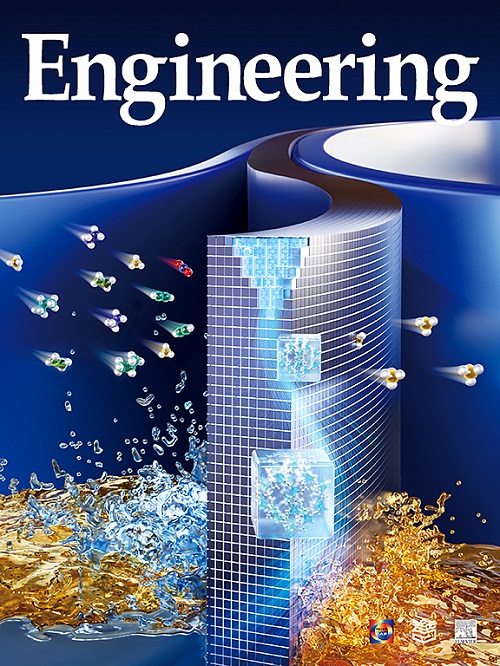Radial Wellbore Cross-Layer Fracturing in Multi-Lithologic Superimposed Shale Oil Reservoirs: A Laboratory Study
IF 10.1
1区 工程技术
Q1 ENGINEERING, MULTIDISCIPLINARY
引用次数: 0
Abstract
Medium-high maturity continental shale oil is one of the hydrocarbon resources with the most potential for successful development in China. Nevertheless, the unique geological conditions of a multi-lithologic superposition shield the vertical propagation of hydraulic fractures and limit the longitudinal reconstruction in reservoirs, posing a great challenge for large-scale volumetric fracturing. Radial wellbore cross-layer fracturing, which transforms the interaction between the hydraulic fractures and lithologic interface into longitudinal multilayer competitive initiation, could provide a potential solution for this engineering challenge. To determine the longitudinal propagation behaviors of fractures guided by radial wellbores, true triaxial fracturing experiments were performed on multilayer shale–sandstone samples, with a focus on the injection pressure response, fracture morphology, and cross-layer pattern. The effects of the radial borehole length L, vertical stress difference Kv, injection rate Q, and viscosity ν of the fracturing fluid were analyzed. The results indicate that radial wellbores can greatly facilitate fracture initiation and cross-layer propagation. Unlike conventional hydraulic fracturing, there are two distinct fracture propagation patterns in radial wellbore fracturing: cross-layering and skip-layering. The fracture height guided by a radial wellbore is positively correlated with Kv, Q, and ν. Increasing these parameters causes a shift in the fracture initiation from a single root to an asynchronous root/toe end and can improve the cross-layer propagation capacity. Critical parameter thresholds exist for fracture propagation through and across interlayers under the guidance of radial boreholes. A parameter combination of critical cross-layering/skip-layering or alternating displacement/viscosity is recommended to simultaneously improve the fracture height and degree of lateral activation. The degree of correlation of different parameters with the vertical fracture height can be written as L > Q/ν > Kv. Increasing the radial wellbore length can effectively facilitate fracture cross-/skip-layer propagation and reduce the critical threshold of injection parameters, which is conducive to maximizing the stimulated reservoir volume.
求助全文
约1分钟内获得全文
求助全文
来源期刊

Engineering
Environmental Science-Environmental Engineering
自引率
1.60%
发文量
335
审稿时长
35 days
期刊介绍:
Engineering, an international open-access journal initiated by the Chinese Academy of Engineering (CAE) in 2015, serves as a distinguished platform for disseminating cutting-edge advancements in engineering R&D, sharing major research outputs, and highlighting key achievements worldwide. The journal's objectives encompass reporting progress in engineering science, fostering discussions on hot topics, addressing areas of interest, challenges, and prospects in engineering development, while considering human and environmental well-being and ethics in engineering. It aims to inspire breakthroughs and innovations with profound economic and social significance, propelling them to advanced international standards and transforming them into a new productive force. Ultimately, this endeavor seeks to bring about positive changes globally, benefit humanity, and shape a new future.
 求助内容:
求助内容: 应助结果提醒方式:
应助结果提醒方式:


